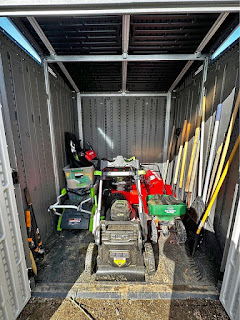Building a lean to shed requires careful planning and preparation, and one of the crucial aspects is gathering the right materials and tools. The quality of materials and tools used can greatly impact the durability, functionality, and overall appearance of the shed. In this article, we will explore the essential materials and tools needed for building a lean to shed, including the different types of materials, tools, and equipment required for a successful shed construction project.
Materials
Wood
- Pressure-treated lumber for framing, walls, and roof
- Plywood for sheathing and roofing
- Wood siding for exterior walls
- Wood trim for finishing touches
- Wood screws, nails, and other fasteners
Roofing
- Asphalt shingles or metal roofing for covering the shed roof
- Roofing nails or screws for securing the roofing material
- Roofing underlayment for moisture protection
Doors and Windows
- Exterior-grade door for entry and exit
- Windows for ventilation and natural light
- Hardware such as hinges, handles, and locks for doors and windows
Foundation
- Concrete blocks, gravel, or pavers for creating a stable foundation
- Treated lumber for building a foundation frame
- Anchor bolts or other hardware for securing the shed to the foundation
Insulation and Moisture Barrier
- Insulation material such as fiberglass or foam for insulating the walls and roof
- Vapor barrier or moisture barrier for preventing condensation and moisture buildup
Paint and Finishing
- Exterior paint or stain for protecting and enhancing the appearance of the shed
- Primer, brushes, rollers, and other painting supplies
- Finishing materials such as caulk, putty, and trim for a professional finish
Tools and Equipment
Hand Tools
- Hammer for driving nails
- Screwdriver for installing screws
- Measuring tape for accurate measurements
- Saw for cutting lumber and other materials
- Level for ensuring level and plumb construction
- Carpenter's square for making square cuts and checking angles
Power Tools
- Power drill for making holes and driving screws
- Circular saw for cutting lumber and plywood
- Nail gun or nailer for fastening nails quickly and efficiently
- Table saw for precise cuts
- Power miter saw for cutting angles and bevels
- Power sander for smoothing surfaces
Other Equipment
- Ladder or scaffold for reaching higher areas of the shed
- Wheelbarrow or dolly for transporting materials
- Workbench or sawhorses for a stable work surface
- Safety equipment such as gloves, goggles, and ear protection
FAQs
Q: What type of wood is best for building a lean to shed?
A: Pressure-treated lumber is recommended for framing, walls, and roof, as it is resistant to decay and insect damage, ensuring the longevity of the shed.
Q: Can I use metal roofing instead of asphalt shingles?
A: Yes, metal roofing can be a durable and long-lasting option for shed roofs. It provides excellent protection against the elements and requires minimal maintenance.
Q: Do I need insulation for my lean to shed?
A: Insulation is not always necessary for lean to sheds, but it can help regulate temperature and prevent condensation. If you plan to use the shed for storing items that are sensitive to temperature changes, insulation may be beneficial.
Q: What safety precautions should I take when using power tools?
A: Always wear appropriate safety gear such as gloves, goggles, and ear protection. Follow manufacturer's instructions and guidelines for safe operation of power tools. Avoid wearing loose clothing that can get caught in the tools, and keep children and pets away from the work area.
Conclusion
Choosing the right materials and tools for building a lean to shed is crucial for a successful construction project. High-quality materials and appropriate tools ensure durability, functionality, and aesthetic appeal of the shed. By using the right materials and tools, following safety precautions, and adhering to building codes and regulations, you can build a lean to shed that meets your needs and stands the test of time.

0 comments:
Post a Comment
Note: Only a member of this blog may post a comment.